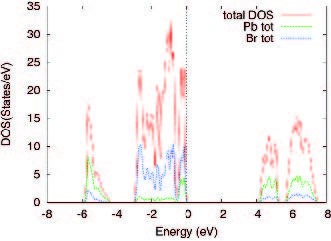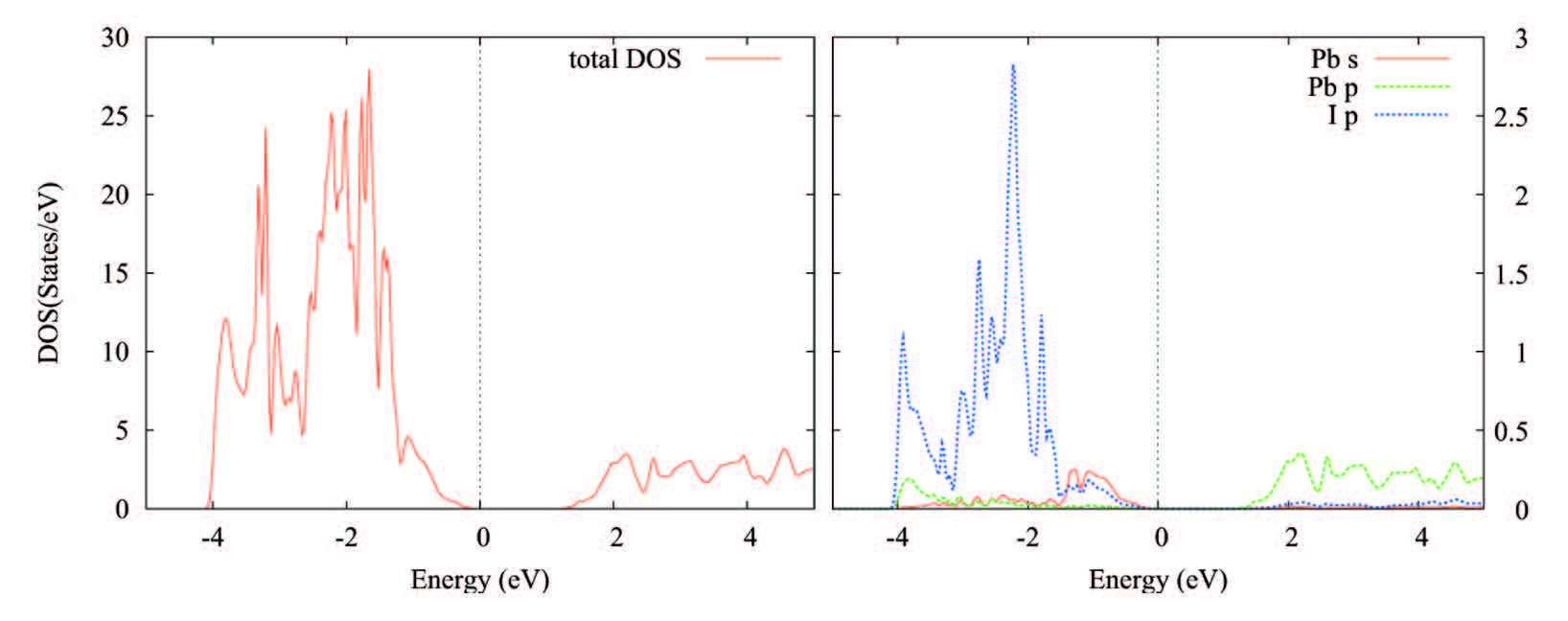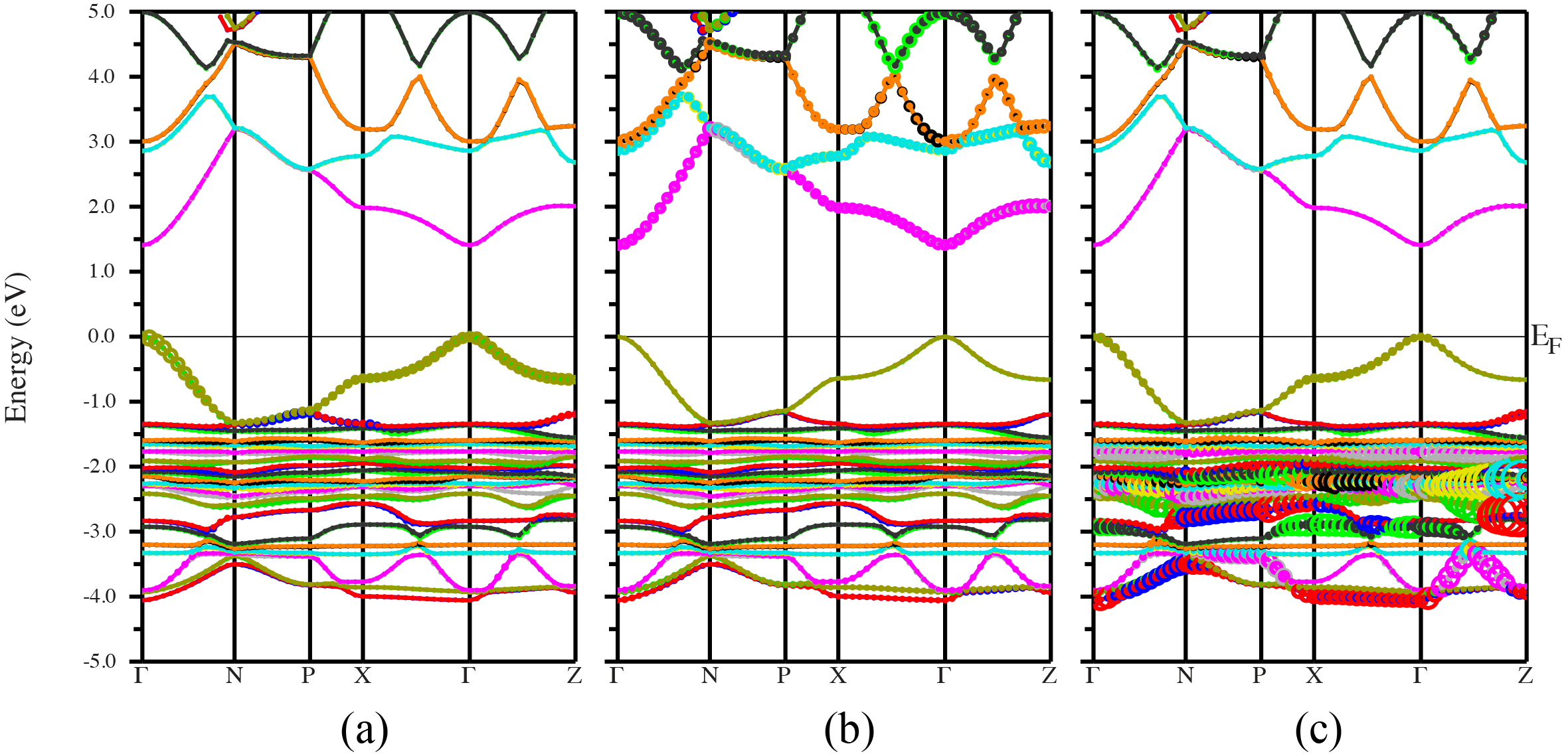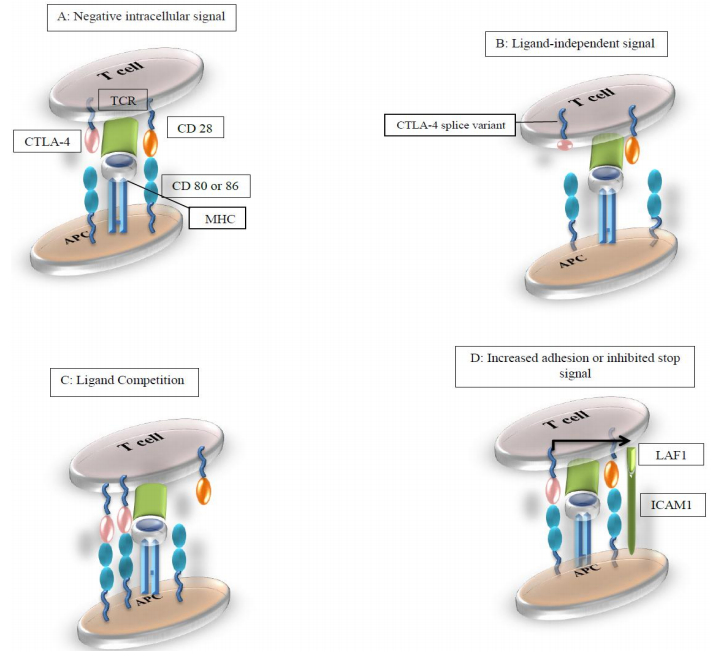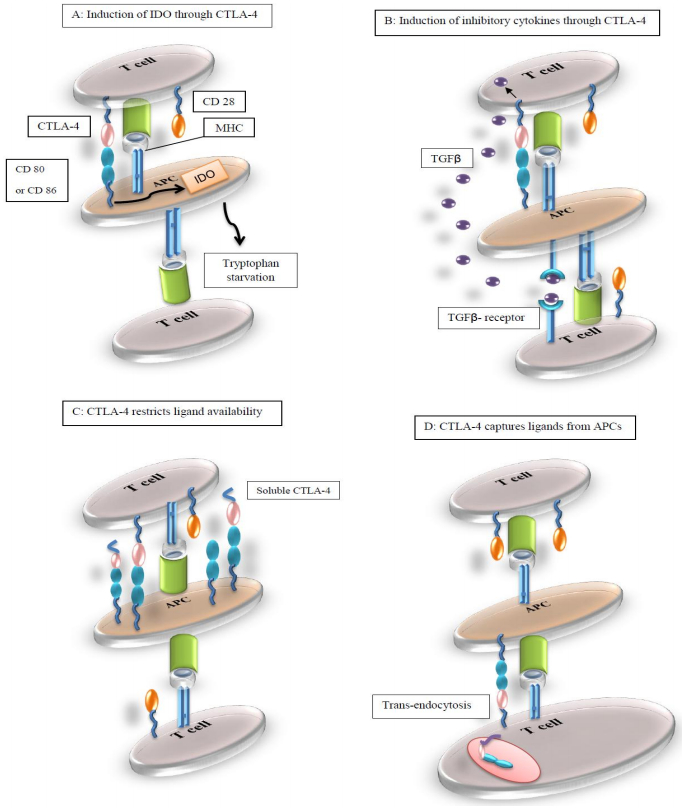1. Introduction
Organolead halide perovskites are attracting great interest, mainly because of their photovoltaic applications. These compounds have the general formula ABX3, where A is an organic cation, B is lead, and X is a halide ion. An example is methylammonium lead iodide (CH3NH3PbI3, abbreviated as MAPbI3), where the MA ion is coordinated to 12 I ions, while Pb is octahedrally coordinated to six I ions, with every two adjacent octahedra sharing a corner.
Following publication of the first report [1] on the use of these compounds as light harvesters in photovoltaic cells, many experimental studies have tried to improve upon material preparation methods and enhance their solar-to-electric power conversion efficiency. [2,3,4,5,6,7,8,9,10,11,12,13,14] Theoretical studies have also been undertaken to explore the electronic properties of these compounds and to develop accurate models for computing the energy bands. [15,16,17,18,19,20,21,22,23,24,25]
MAPbI3 has a band gap of 1.5-1.6 eV. [12,26] The possibility of tuning the band gap by various substitutions has been considered. One approach is to replace I with Br or Cl, yielding MAPbBr3 or MAPbCl3, with band gaps given by 2.22 eV and 3.17 eV, respectively.[12,27,28] Another approach is to replace the methylammonium cation with another cation of a different size. When CH3NH3 is replaced with FA = NH2CHNH2 (formamidinium), FAPbI3 with a band gap of 1.43-1.48 eV is obtained. [29,30,31,32,33] The lower band gap in FAPbI3, compared to the one in MAPbI3, leads to an increase in the material’s optical absorption range. Unfortunately, FAPbI3 is unstable under ambient conditions. However, it has been shown recently that the incorporation of MAPbBr3 into FAPbI3 stabilizes the perovskite phase of FAPbI3 and enhances the power conversion efficiency of the solar cell to 18 percent.[34]
In addition to the extensive work demonstrating the applications of organometallic halides in solar cells, it has been shown that these materials have optoelectronic applications in light-emitting diodes.[35,36] For such applications, it is desirable to have materials where the optical band gap can be tuned over a wide range of the visible spectrum. Recent studies [27] have shown that, in MAPbBr3, it is easy to substitute Cl for Br, yielding air-stable MAPbBr3-xClx with x=0-3. The simple cubic lattice structure of MAPbBr3 is maintained as x increases, and the lattice constant decreases linearly with increasing x; the reduction is 5% at x = 3. On the other hand, the band gap increases with increasing x, leading to a tunable band gap in the 400 to 550 nm wavelength range.
The crystal structure of the organometallic halides depends on the radii of the constituent ions
through the Goldschmidt tolerance factor t, which, for the compound ABX3, is given by
where
rA,
rB, and
rX are the ionic radii of the A, B, and X ions, respectively. This factor serves as a guide to predicting the crystal structure of ABX
3; for values of
t ranging from 0.9 to 1.0, an ideal cubic perovskite structure is favored.
In calculating t, one is faced with the problem of what value to use for the ionic radius of the organic cation A; different values result from different methods of calculation. Amat et al.[37] obtained an ionic radius of 2.70 Å for CH3NH3+ by calculating the volume inside a contour of 0.001 electrons/bohr3 density. Kieslich et al.[38] considered a hard sphere model in which the cation rotates freely about its center of mass. The ionic radius of CH3NH3+ is then taken to be the distance from the cation’s center of mass to nitrogen, plus 1.46 Å (the ionic radius of nitrogen). This method yields a value of 2.17 Å for the ionic radius of the methylammonium ion.
We can set some bounds on the value of the ionic radius of CH3NH3+ by noting that both MAPbBr3 and MAPbCl3 adopt an ideal cubic perovskite structure. Taking the ionic radii of Pb, Br, and Cl to be 1.19 Å, 1.96 Å, and 1.81 Å, respectively, we find that for the tolerance factor t to lie between 0.9 and 1.0, the ionic radius of CH3NH3+ should lie between 2.04 Å and 2.50 Å, These values should not be considered strict limits; they are reasonable estimates. We should note that, in organolead halide compounds, the methylammonium ion does not rotate freely about its center of mass. There is disorder, manifested by the existence of 12 equivalent positions for C and N. In all these positions, the midpoint of the C-N bond is always at, or extremely close to, the center of the cubic unit cell.[39] Thus, we may estimate the ionic radius of CH3NH3+ as one half the C-N bond length plus the ionic radius of nitrogen. Optimizing the structure of the methylammonium cation by using the 6-31G** basis set of gaussian orbitals and the B3LYP exchange potential [40] as implemented within Gaussian 09, [41] the ionic radius of the cation is found to be 2.23 Å. The resulting Goldschmidt tolerance factors are 0.952, 0.941, and 0.924 for MAPbCl3, MAPbBr3, and MAPbI3, respectively. These values are consistent with the fact that these compounds adopt a perovskite structure.
The electronic properties of organometallic halides depend on various factors which can be controlled experimentally. These factors include lattice constants, which can be varied by applying external pressure or internal chemical pressure; the type of halide ion, controlled by chemical substitution; and the type of organic ion. To obtain meaningful results, it is important to use a computational model which accurately describes the known electronic properties of these compounds and which can predict the effect of these variables upon them. Density functional theory (DFT) in the Kohn-Sham formulation [42] is the most widely used method. Here, the exchange potential is approximated by a functional of the electronic density, with the most common approximations being the local density approximation (LDA) [42] and the generalized gradient approximation (GGA). [43] Although the ground state is well described by LDA and GGA, these approximations fail to account for excited-state properties. In many semiconductors the values of the band gaps are severely underestimated. Improved values for the band gaps are obtained by using the GW method.[44] The usefulness of this method, however, is hampered by its high computational cost.
A different exchange potential, introduced by Becke and Johnson, [45] was recently modified by Tran and Blaha.[46] The modified Becke-Johnson (mBJ) potential is given by
|
@VmBJ(r)=cVBRx(r)+(3c−2)1π√512 [2t(r)/ρ(r)]1/2
@
|
(2) |
where @V_x^{BR}(\mathbf{r})@ is the Becke-Roussel exchange potential,
[47] @\rho(\mathbf{r})@ is the electron density, and @t(\mathbf{r})@ is the Kohn-Sham kinetic energy density. In the above equation,
where
g is the average of @|\nabla \rho /\rho |@ over the volume of the unit cell, and
A and
B are parameters adjusted to produce the best fit to the experimental values of the semiconductor band gaps.
We have recently shown that, upon using the modified Becke-Johnson exchange potential with A = 0.4 and B = 1.0 bohr1/2, the calculated band gaps of MAPbI3, MAPbBr3, RbPbI3, and CsPbX3 ( X = Cl, Br, I) are in excellent agreement with experimental values. [24] In this work, we show that applying this method to the lead halide compounds PbCl2, PbBr2, and MAPbBr3-xClx for x = 1, 2, and 3 produces accurate values for the band gaps. We then use this method to demonstrate that a small reduction in the lattice constants of MAPbBr3 and MAPbI3 produces a considerable downshift in the band gaps. Reduction in the lattice constants can be achieved by replacing CH3NH3+ with slightly smaller cations, such as N2H5+ and N2H3+.
2. Methods
Total energy calculations are carried out using the all-electron, full potential, linearized augmented plane wave (FP-LAPW) method as implemented in the WIEN2k code.[48] In this method, space is divided into two regions. One region consists of the interior of non-overlapping muffin-tin spheres centered at the atom sites. The rest of the space (the interstitial) constitutes the other region. In all the calculations reported in this work, the radii of the muffin-tin spheres are 2.1a0 for Pb, Cl, Br, and I, where a0 is the Bohr radius. On the other hand, the radii for C, N, and H are chosen such that the muffintin spheres on adjacent atoms almost touch. The electronic wave function is expanded in terms of a set of basis functions which take different forms in the two regions mentioned above. Inside the muffintin spheres, the basis functions are atomic-like functions which are expanded in terms of spherical harmonics up to lmax = 10. In the interstitial region, they are plane waves with a maximum wave vector Kmax. Each plane wave is augmented by one atomic-like function in each muffin-tin sphere. Usually, Kmax is chosen such that RmtKmax = 6-9, where Rmt is the radius of the smallest muffin-tin sphere in the unit cell. However, due to the very smallness of the muffin-tin radius of hydrogen (RH = 0.65-0.70 a0), we set RHKmax = 3.0. For orthorhombic and tetragonal systems, a 4x4x4 Monkhorst-Pack grid [49] was used for sampling the Brillouin zone, while an 8x8x8 grid was chosen for cubic systems.
The charge density is Fourier-expanded up to a maximum wave vector Gmax = 20a0-1. In GGA calculations, PBEsol functional [50] is used for the exchange potential. This method is well-suited for optimizing atomic positions and lattice constants. In the self-consistent calculations, the total energy and charge were converged to within 0.1 mRy and 0.001 e, respectively. In calculations which employ the modified Becke-Johnson exchange potential, we choose A = 0.4 and B = 1.0 bohr1/2, where A and B are the parameters which appear in Eq.(3).
3. Results and Discussion
We begin by carrying out DFT calculations on PbCl2, PbBr2, and MAPbBr3-xClx, for x = 0, 1, 2, and 3. At room temperature, PbCl2 and PbBr2 adopt an orthorhombic crystal structure [51] with space group Pbnm, while MAPbBr3-xClx crystals have a cubic unit cell [12,27]. The experimental values of the lattice constants of these crystals are given in Table 1.
Table 1. Crystal structure and lattice constants for some of the compounds studied in this work.
| Compound | Structure | Lattice constants (Å) |
| PbCl2 | Orthorhombic | a=9.03, b=7.608, c=4.525 |
| PbBr2 | Orthorhombic | a=9.466, b=8.068, c=4.767 |
| MAPbBr3 | Cubic | a=5.933 |
| MAPbBr2Cl | Cubic | a=5.88 |
| MAPbBrCl2 | Cubic | a=5.78 |
| MAPbCl3 | Cubic | a=5.71 |
In DFT calculations, it is important to take into account spin-orbit coupling, mainly because of the presence of Pb. Our results are summarized in Table 2. In all the compounds under consideration, we find that GGA+SOC severely underestimates the values of the band gaps. On the other hand, our present method (mBJ+SOC, with A = 0.4 and B = 1.0 bohr1/2 in Eq. (3)) yields values for the band gaps which are in excellent agreement with experiment. These results, along with previous calculations [24] on other lead halide compounds, give us confidence in the ability of DFT combined with the mBJ exchange potential to accurately predict the band gaps in all lead halide compounds.
Table 2. Calculated and experimental band gaps, in eV, for the compounds that are studied in this work.
| Compound | GGA+SOC | mBJ+SOC | Experiment |
| PbCl2 | 3.18 | 5.13 | 5.38, [52] 4.86 [53] |
| PbBr2 | 2.46 | 4.19 | 4.23, [54] 4.1 [55] |
| MAPbBr3 | 0.45 | 2.23 | 2.28 [12] |
| MAPbBr2Cl | 0.46 | 2.42 | 2.65 [27] |
| MAPbBrCl2 | 0.57 | 2.76 | 2.90 [27] |
| MAPbCl3 | 1.0 | 3.22 | 3.17 [27] |
In Fig.1 we present the calculated density of states in PbBr2. The figure shows that the lower-lying conduction bands are derived from Pb orbitals, while both Pb and Br orbitals contribute to the highest valence band. The situation is similar in PbCl2 and MAPbBr3-xClx; the low conduction bands are derived mainly from Pb orbitals while the valence band is composed of Pb and halide orbitals.
We now apply this method to study the variation of the band gap in MAPbBr3 and MAPbI3 with the reduction of the lattice constants. Our results indicate that the band gap in these materials is very sensitive to lattice constant variation. At the experimental values of the lattice constants, our calculations give a band gap of Eg = 1.54 eV in MAPbI3 and Eg = 2.23 eV in MAPbBr3. For a 1% reduction in the lattice constants, we obtain Eg = 1.31 eV in MAPbI3 and Eg = 1:95 eV in MAPbBr3, while for a 2% reduction, we obtain Eg = 1.17 eV in MAPbI3 and Eg = 1.75 eV in MAPbBr3. In arriving at these results, we have assumed that, with reduced lattice constants, MAPbI3 maintains its body-centered tetragonal structure, and MAPbBr3 its simple cubic structure.
A reduction in the lattice constants of organometallic halides can be achieved by applying an external pressure or by replacing CH3NH3+ with a cation of a slightly smaller ionic radius. We consider two cations: N2H5+ (diazanium) and N2H3+ (diazenium). In each case, the ionic radius is taken to be equal to one-half the N-N bond length plus the ionic radius of nitrogen, as discussed in the introduction. Using coupled cluster theory with a perturbative treatment of the triple excitations, Matus et al.[56] calculated the N-N bond lengths in N2H5+ and N2H3+ to be 1.46 Å and 1.24 Å, respectively. Using these values, we obtain 2.19 Å and 2.08 Å for the ionic radii of N2H5+ and N2H3+, respectively. These values are only slightly smaller than the corresponding value for CH3NH3+, estimated by the same method to be 2.23 Å. The Goldschmidt tolerance factors for N2H5PbBr3 and N2H5PbI3 are 0.932 and 0.916, respectively, while for N2H3PbBr3 and N2H3PbI3 they are 0.907 and 0.893, respectively. Thus, the replacement of CH3NH3 with N2H5 or N2H3 leads to only a small change in the tolerance factor. Hence, we assume that N2H5PbBr3 and N2H3PbBr3 will have a cubic unit cell, similar to MAPbBr3, and that N2H5PbI3 and N2H3PbI3 will maintain a body-centered tetragonal structure, as seen in MAPbI3.
Upon carrying out structure optimization, we find that the lattice constants for N2H5PbBr3 and N2H3PbBr3 are a = 5.86 Å and 5.806 Å, respectively. On the other hand, we find a = 8.81 Å and c = 12.59 Å for N2H5PbI3, while a = 8.76 Å and c = 12.52 Å for N2H3PbI3. The calculated band gaps of these compounds, using the modified Becke-Johnson exchange potential with A = 0.4 and B = 1.0 bohr1/2 in Eq.(3) and taking into account spin-orbit coupling, are presented in Table 3. These results show that the replacement of CH3NH3 with N2H5 or N2H3 causes a considerable redshift in the band gap values.
Table 3. Band gaps for different lead halide compounds, calculated using the modified Becke-Johnson exchange potential and taking into account the effect of spin-orbit coupling.
| Compound | Band gap (eV) |
| N2H5PbBr3 | 1.94 |
| N2H3PbBr3 | 1.77 |
| N2H5PbI3 | 1.41 |
| N2H3PbI3 | 1.13 |
The calculated density of states in N2H5PbI3 is presented in Fig.2. It is noted that, similar to CH3NH3PbI3, the low-lying conduction bands are derived mainly from Pb p orbitals, whereas the highest valence band is composed of both Pb s and I p states. Bands in the energy range -4 eV to -2 eV are derived mostly from iodine p orbitals. The character of the valence and conduction bands is also made clear in Fig.3, where the energy bands along some high-symmetry directions in the first Brillouin zone are plotted. The size of the circles is proportional to the contribution of the chosen atomic orbital to the eigenstates at each k-point. The fact that s (l = 0) and p (l = 1) orbitals on the same atom (Pb) make large contributions to the wave functions at the valence band maximum and conduction band minimum is responsible for the large optical absorption coefficients that occur in these compounds, and hence their usefulness in solar cell applications.
In N2H5PbI3, the valence band maximum (VBM) and conduction band minimum (CBM) occur at the @\Gamma@-point, the Brillouin zone center. In ideal cubic perovskites, VBM and CBM occur at the zone’s corner point R(1/2, 1/2, 1/2). Here, N2H5PbI3 is assumed to have a body-centered tetragonal structure with two formula units per primitive cell. The conventional tetragonal unit cell, with four formula units, is a slight distortion of the @\sqrt{2} \times \sqrt{2} \times 2@ supercell of the ideal cubic unit cell, and point R is zone-folded into point @\Gamma@.
Spin-orbit coupling (SOC) has a profound effect on the band structure in organolead halide compounds. In Fig.3, we see that at the @\Gamma@ point, the lowest conduction band has energy 1.41 eV, while the next two higher bands have energy close to 3 eV.. In the absence of SOC, those three bands would be almost degenerate at the @\Gamma@ point, and all of them would occur at about 2.5 eV. In a cubic perovskite structure, such as the one found in MAPbBr3, the conduction band minimum at point R is six-fold degenerate (including spin degeneracy); SOC partially lifts the degeneracy, giving rise to a doublet ( j = 1/2) with a lower energy and a quartet ( j = 3/2) with a higher energy. In a body-centered tetragonal structure, CBM occurs at point @\Gamma@, degeneracy is now only approximate (it was exact in the cubic structure), and SOC again splits the almost six-fold degenerate level into one lower doublet and two higher doublets.
4. Conclusions
We have presented calculations on various lead halide compounds using density functional theory with modified Becke-Johnson exchange potential. For the compounds PbCl2, PbBr2, and CH3NH3PbBr3-xClx, for x = 0, 1, 2, and 3, we showed that the calculated band gaps are in excellent agreement with experimental values. We then used this computational method to predict the electronic structure of similar compounds, namely, those that result from the replacement of the methylammonium cation in MAPbBr3 and MAPbI3 with the slightly smaller cations N2H5+ and N2H3+. A significant downshift in the band gap values is predicted to occur as a result of these replacements. In particular, we predict that N2H5PbI3 and N2H3PbI3 have band gaps given by 1.41 eV and 1.13 eV, respectively. Therefore. these compounds, if synthesized, would be excellent light harvesters in solar cells. It should be noted, however, that the instability of the diazenium cation (N2H3+) may make it difficult to use it as a replacement for the methyl ammonium cation.
Acknowledgments
The author gratefully acknowledges support by National Science Foundation under grant No. HRD- 0932421 and NSF PREM Program: Cal State L.A. & Penn State Partnership for Materials Research and Education, award DMR-1523588.
Conflict of Interest
The author reports no conflict of interest in this research.









 DownLoad:
DownLoad: 